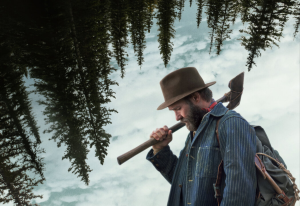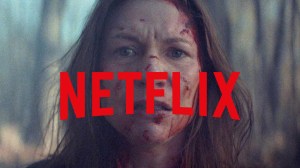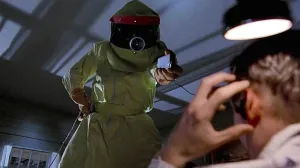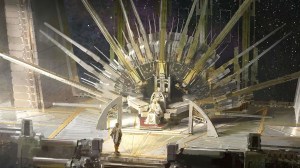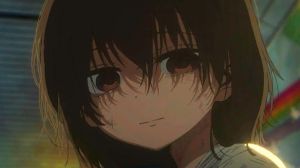Game of Thrones was so big that it still resonates today, even with its spin-off already heading into Season 3 and new projects from George R. R. Martin’s universe on the way. But the show didn’t conquer the world just because of its dragons, political schemes, or shocking twists – it also had a real talent for sending chills down viewers’ spines. Across its eight seasons, the HBO hit built a world that was dark, unpredictable, and often brutally cruel, starting right from the very first episode. While not officially a horror series, moments like these left a strong impression and have stayed with fans ever since.
Videos by ComicBook.com
With so many brutal deaths, betrayals, terrifying supernatural beings, and an overwhelming sense of dread, choosing the scariest moments from Game of Thrones is no easy task. Still, a few stand out for going far beyond expectations – delivering the kind of tension and fear that wouldn’t be out of place in a top-tier horror film. Here are seven moments that prove Westeros can be every bit as terrifying as any cinematic nightmare.
The First White Walker Attack

For many, it might not seem like the scariest scene, but considering that the first White Walker attack happens in Episode 1 of Season 1, it’s definitely impactful enough to be frightening. At that point, most people still had no idea what Game of Thrones was really about – and it’s through this scene that the series sets its tone. In it, three Night’s Watch rangers venture into the Haunted Forest beyond the Wall, where they come across the bodies of wildlings arranged in a ritualistic pattern. When they return to the site, the bodies are gone – and they’re suddenly attacked by creatures with glowing blue eyes. One of the rangers witnesses the brutal death of his companions and the reanimation of one of them as a wight.
This opening sequence is terrifying precisely because of its eerie atmosphere and the introduction of a supernatural threat that will go on to shape the entire saga. The mix of near-total silence, the cold, desolate setting, and the chilling presence of inhuman creatures creates a deep sense of unease that lingers throughout the series – especially in the final seasons when the White Walkers fully return. The scene serves as an early reminder that beyond the political games and power struggles, ancient and deadly forces are always lurking in the shadows.
[RELATED: These 7 Episodes of Game of Thrones Changed TV Forever]
The Red Wedding
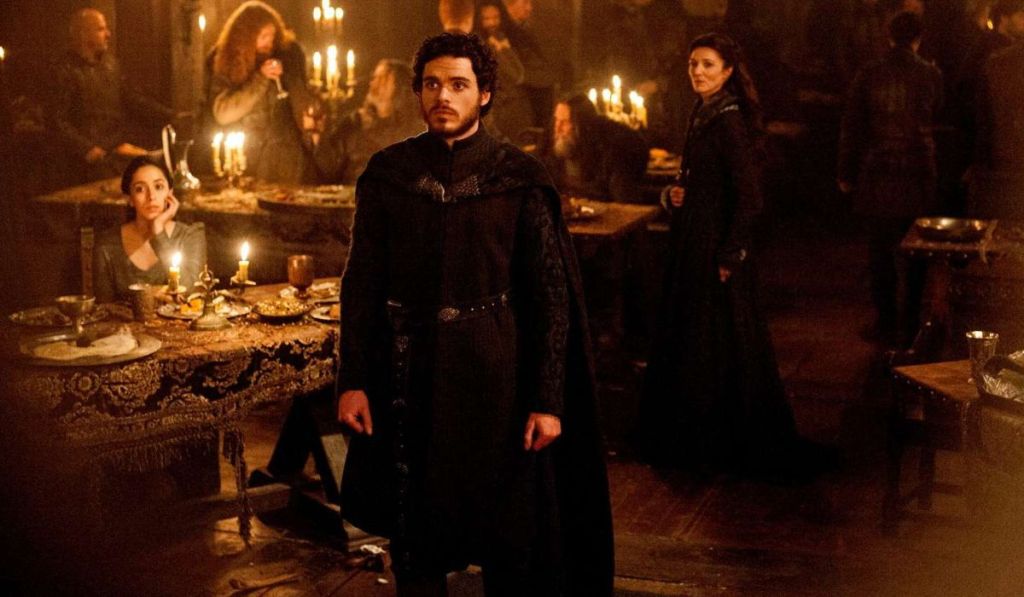
The first seasons of Game of Thrones are fan favorites, but not all of their episodes are remembered fondly – in fact, Season 3 Episode 9 is something most people would probably rather forget. The Red Wedding is an event everyone knows about (and arguably the first truly traumatic moment in the entire series – and on TV). In it, Robb Stark (Richard Madden), his pregnant wife Talisa (Oona Chaplin), and his mother Catelyn (Michelle Fairley) attend the wedding of Edmure Tully (Tobias Menzies) to Roslin Frey (Alexandra Dowling), hoping to mend the broken alliance with House Frey. However, during the celebration, the Freys – with the support of the Lannisters and Boltons – betray the Starks. The scene ends with Talisa being brutally stabbed, Robb shot with arrows and then stabbed, and Catelyn having her throat slit after witnessing her son’s death.
The horror of this scene lies not only in the graphic violence, but in the complete destruction of expectations and the ruthless betrayal during what should have been a moment of unity and peace. The cold, calculated execution of the murders, combined with the main characters’ helplessness, leaves the audience in shock and disbelief. The episode delivers a major plot twist and is truly terrifying because everything happens so suddenly and without pause.
The Torture of Theon Greyjoy
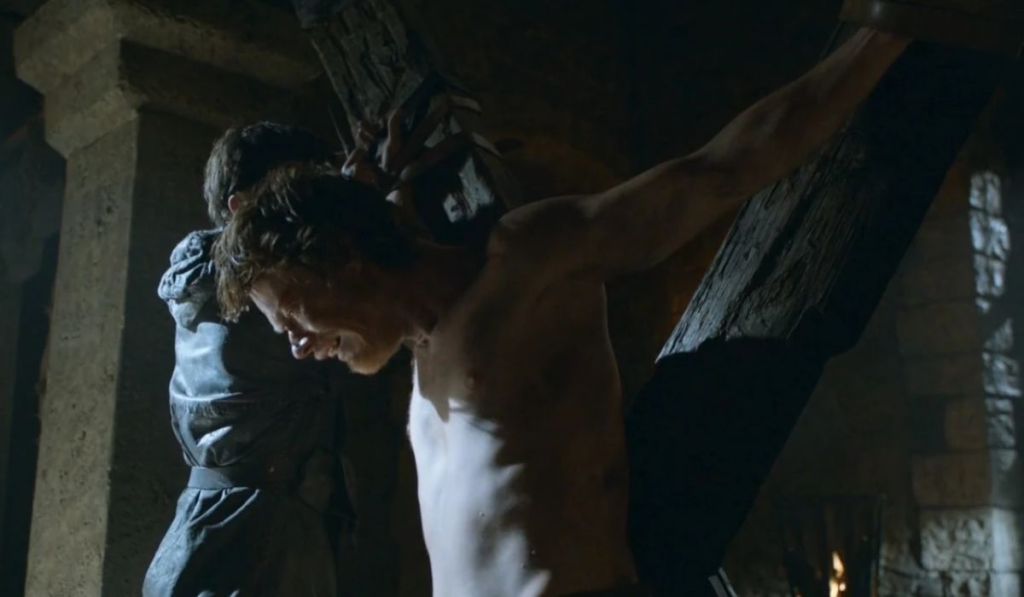
Ramsay Bolton (Iwan Rheon) is undeniably one of the most sadistic characters in TV history. His moments on screen are a prime example of how you can be terrifying without relying on traditional fear and panic. It’s tough to pick just one of his many disturbing acts, but his torture of Theon Greyjoy (Alfie Allen) stands out as one of the hardest to watch in the series. After being captured, Theon is taken to the Dreadfort, where Ramsay subjects him to a relentless cycle of physical and psychological abuse. There’s mental subjugation, utter despair, and a sickening level of human degradation. But it’s in Episode 10 of Season 3 that we see the grotesque, unforgettable moment of castration.
Ramsay makes Theon believe he’s about to be freed by his sister, Yara (Gemma Whelan). However, instead of releasing him, Ramsay castrates Theon, cutting off his genitals and sending them to Balon Greyjoy (Patrick Malahide), Theon’s father, as a horrific message of power and humiliation. It’s bizarre, cruel, and agonizing to watch, especially when you see how Theon is left completely mentally broken and traumatized in the later seasons of Game of Thrones.
Oberyn Martell’s Death
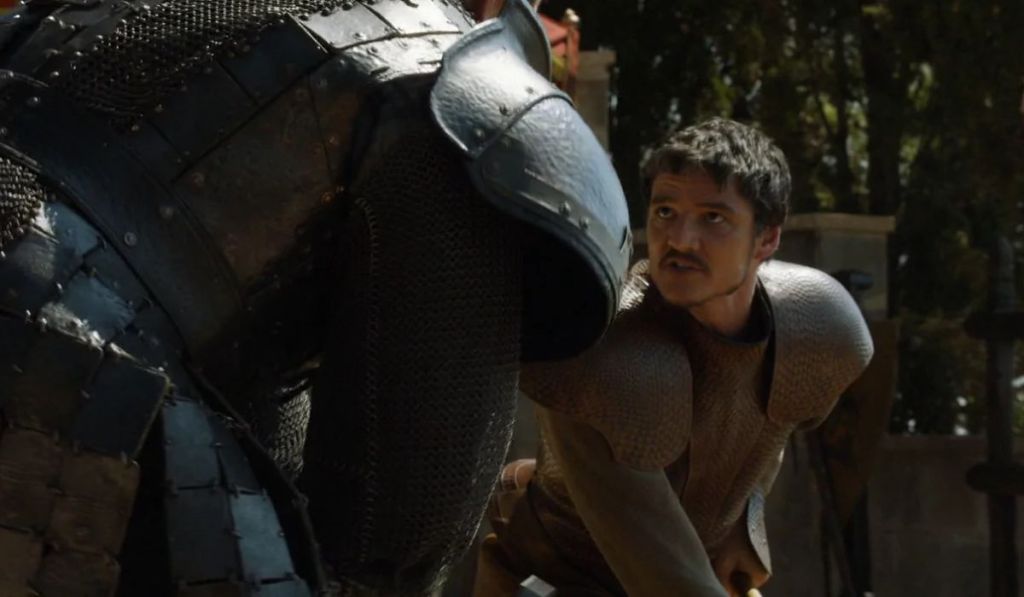
When Game of Thrones had already made it clear that anything could happen and violence was never off the table, the death of Oberyn Martell (Pedro Pascal) drove that point home. In Season 4, Episode 8, he faces Gregor Clegane (Hafþór Júlíus Björnsson), known as “The Mountain,” in a trial by combat. Seeking revenge for the death of his sister Elia Martell (Indira Varma), Oberyn fights with agility and skill, seriously injuring his opponent. But his need for a confession leads Gregor to grab him and crush his eyes with his thumbs. Then, he finishes by smashing Oberyn’s skull with his bare hands – a scene that’s utterly shocking for both its graphic brutality and its unexpected twist.
But beyond the gruesome visuals, what makes this moment so devastating is how quickly Oberyn had become one of the most charismatic characters in Game of Thrones. His sudden death left fans stunned. At that point, viewers had already seen major characters like Ned Stark die, but it’s this moment that really made it clear: no one was safe, and getting attached to any character was a dangerous gamble.
The Battle of Hardhome

If you’ve ever watched a zombie movie, Game of Thrones takes things to another level with The Battle of Hardhome, delivering fear and shock on almost the same scale. In Season 5, Episode 8, Jon Snow (Kit Harington) leads a diplomatic mission to convince the Wildlings to ally with the Night’s Watch against the looming threat of the White Walkers. But just as negotiations are underway, the coastal town of Hardhome is suddenly attacked by an army of wights, resulting in a brutal massacre. There are some compelling moments in the chaos – like Jon discovering that his Valyrian steel sword can kill White Walkers – but the overall effect is one of pure despair.
With virtually no warning, a seemingly endless horde of the undead storms the village in a sequence that feels like the best (or worst) of apocalyptic horror. What makes the scene so terrifying is the overwhelming sense of helplessness. The wights don’t just attack – they crash down like an unstoppable avalanche. This episode marked a major turning point in the series, especially as it ends with the Night King raising the dead right in front of Jon, instantly swelling the ranks of his army. It’s chilling because it forces everyone to realize that defeating them won’t be easy – or even possible.
Shireen Baratheon’s Death
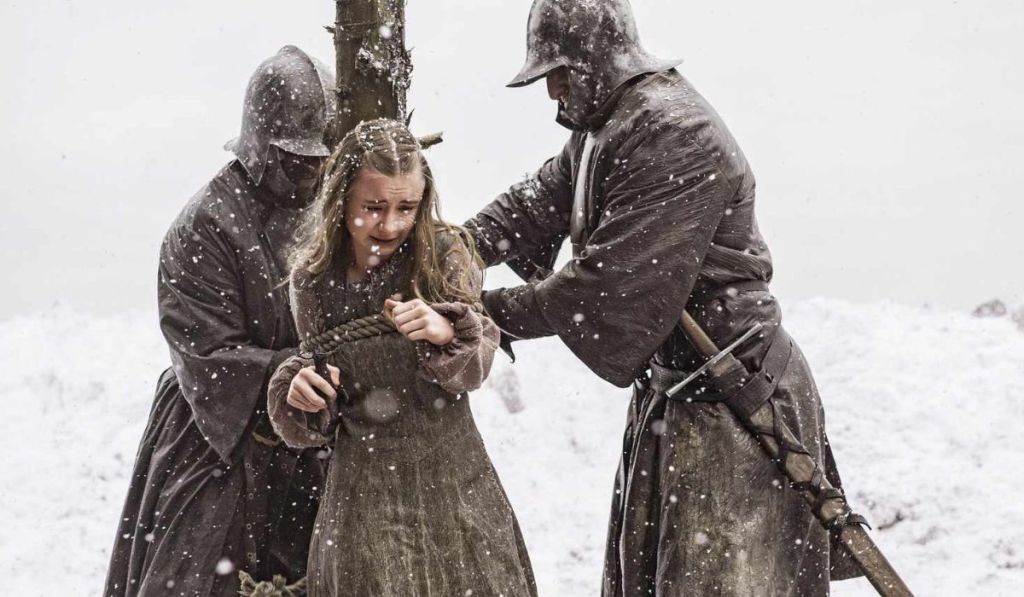
Here, the goal isn’t to scare, but to leave the audience completely stunned by a deeply disturbing moment – much like something out of a psychological horror film. In Season 5, Episode 9, Shireen Baratheon (Kerry Ingram) is killed by her father, Stannis Baratheon (Stephen Dillane), under the influence of Melisandre (Carice van Houten). He decides to sacrifice his daughter to the Lord of Light, believing it will secure victory in his military campaign. The whole thing is heartbreaking and hard to watch, especially because of Shireen’s anguish. Innocent and loyal, she’s burned alive while crying out for her parents – and no one steps in. It’s unbearably brutal.
What makes it even worse is the emotional weight built up by the father-daughter relationship beforehand. If their bond had been colder or less explored, the moment might not have hit so hard. But Stannis choosing to sacrifice his own child in the name of extreme religious belief highlights just how far Game of Thrones is willing to go in exploring the limits of ambition and faith – this show is not for the faint of heart. The cruelty was so intense that it even sparked public debate, with many considering it a point of no return for the characters involved.
Hodor’s Death
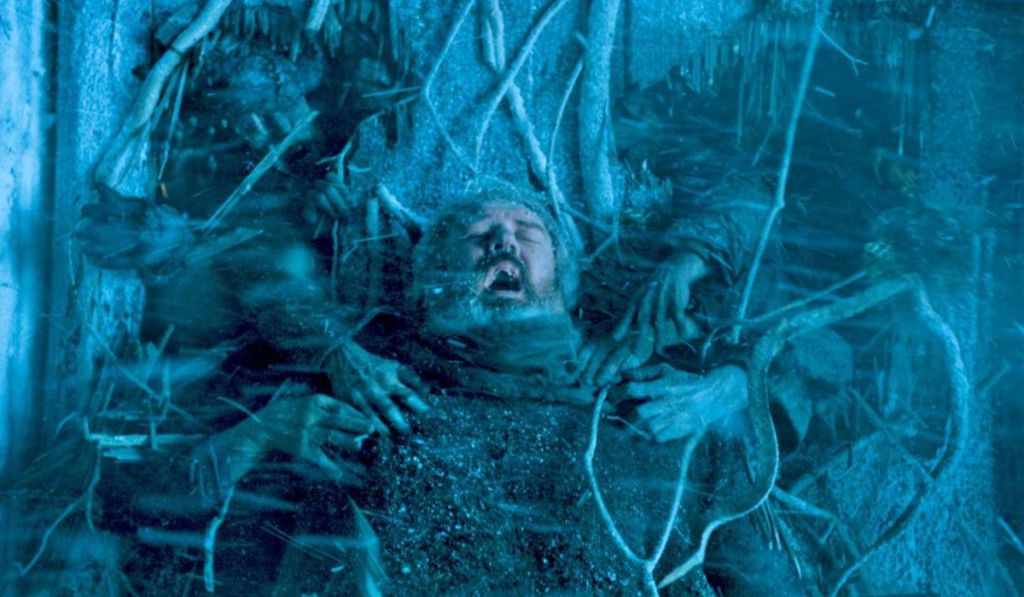
“Devastating” is the right word. Game of Thrones managed to traumatize viewers when it revealed Hodor’s (Kristian Nairn) past in Season 6, Episode 5. While Bran Stark (Isaac Hempstead Wright) is exploring visions of the past, he unintentionally connects his mind to the present, where Hodor is helping Meera (Ellie Kendrick) escape an attack by the wights. To ensure their escape, Hodor heroically holds a door against the undead and sacrifices himself. During this act, he simultaneously experiences his own future death, which causes him to repetitively say “hold the door,” eventually turning into “Hodor” – finally explaining the origin of his name and condition.
The horror genre doesn’t always rely on gruesome scenes to disturb, but rather on emotional ones, making it the kind of moment no one wants to relive because of its profound sadness. It deals with the collapse of time and identity, revealing that Hodor lived his entire life carrying a trauma predestined by an event that would only happen in the future. This revelation transforms his entire existence into a dark premonition of his own death. The psychological horror of realizing that his mind was broken as a child because of an order he would only understand in the moment of his death gives this scene a tragic and haunting weight.
Game of Thrones is available to stream on Max.

